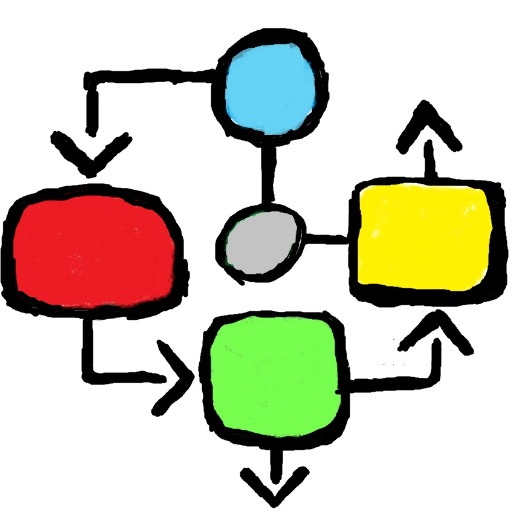DICOM Assistant-AI-powered DICOM query tool
AI-powered tool for DICOM solutions.
What is a PACS?
What is a Modality?
What is a DICOM Conformance Statement?
What is an AE Title?
What is a DICOM Viewer?
What is HL7?
What information is in a DICOM Header?
What is IHE?
What is a DICOM Worklist?
What is a SOP?
Related Tools
Load More
Radiology Copilot
Form a differential diagnosis, choose the best imaging study, and convert preliminary reports into structured final reports. Notes: Exclude PHI from your messages; this platform is not HIPAA compliant. Also, check everything against your knowledge and re

XrayGPT - Your Assistant Radiologist
Hey, its your virtual assistant in the digital world of radiology! I'm XrayGPT, an assistant radiologist, ready to dissect medical cases with you and giving you some medical insights. Let's navigate the maze of X-rays, diagnostics, and medical images toge

DoctorGPT
Provides evidence-based medical information and advice.

XRay Diagnostic Assistant
Analyzes X-ray images and provides diagnostic reports

Medi Assistant
Formal, doctor-like assistant for healthcare providers.
SOAP Note Assistant
Creating idealized Medical SOAP notes with possible treatment plan, including medication dosages and disposition. Make starter progress notes or Dot Phrases. Good for medical and nursing students.
20.0 / 5 (200 votes)
Introduction to DICOM Assistant
DICOM Assistant is a specialized AI tool designed to provide technical assistance on the Digital Imaging and Communications in Medicine (DICOM) standard. Its core purpose is to offer detailed, structured, and accurate information regarding DICOM, focusing on a range of user needs, from software developers and project managers to product owners and medical imaging professionals. The tool emphasizes precision and technical depth, aligning its responses with the formal tone found in DICOM documentation. DICOM Assistant excels in providing explanations related to the DICOM standard's structure, functions, and workflows, aiding professionals in developing and optimizing applications within healthcare imaging systems. For example, a software engineer may inquire about the correct way to implement DICOM tags for patient data anonymization. DICOM Assistant would provide a breakdown of relevant tags, anonymization processes, and practical guidelines for implementation based on the standard's latest specifications. It ensures that every response is aligned with DICOM best practices and is framed in the formal, detailed style that DICOM professionals are accustomed to.

Main Functions of DICOM Assistant
DICOM Standard Reference
Example
A project manager working on a PACS system integration asks for the standard method to store ultrasound image data using DICOM. The DICOM Assistant retrieves the specific SOP Classes, Transfer Syntaxes, and Image Storage guidelines, explaining their relationships and usage.
Scenario
This function is utilized when professionals need quick access to DICOM standard details, such as finding specific DICOM tags, attributes, service classes, or identifying compatibility between devices.
DICOM Tag Lookup and Explanation
Example
A software developer is uncertain about the meaning of a particular DICOM tag, such as `(0010,0010)` Patient's Name, and its usage in clinical workflows. DICOM Assistant provides a detailed description, along with value representation (VR), data format, and privacy considerations.
Scenario
DICOM tag lookup is applied when engineers or technical leads need to ensure the correct handling, formatting, or interpretation of DICOM data in image archives or viewer applications.
DICOM Workflow Guidance
Example
A product owner tasked with creating a radiology imaging application asks about best practices for implementing the DICOM Query/Retrieve service. DICOM Assistant explains the process in detail, describing C-FIND, C-MOVE, and C-GET operations, and their typical uses in PACS communication.
Scenario
This guidance is critical during the design and development of healthcare imaging systems, particularly for professionals aiming to streamline the communication and interoperability of medical devices in a clinical environment.
Ideal Users of DICOM Assistant
Software Engineers and Developers
Engineers working on medical imaging systems, particularly those involved in developing, debugging, or optimizing DICOM-based applications, benefit from DICOM Assistant's precise and technical explanations. The tool assists in understanding how to correctly implement DICOM features, integrate medical imaging systems, and ensure compliance with standards.
Project Managers and Product Owners in Healthcare IT
These professionals need to ensure that medical imaging solutions meet both clinical requirements and technical standards. DICOM Assistant helps them by providing accurate references to DICOM workflows, SOP Classes, and best practices, allowing them to manage development timelines, improve interoperability, and maintain regulatory compliance.

Detailed Guidelines for Using DICOM Assistant
Step 1
Visit aichatonline.org for a free trial without login, no need for ChatGPT Plus.
Step 2
Review prerequisites for using the assistant: Ensure a stable internet connection and a web browser with up-to-date security settings. No specialized software is required beyond basic browsing tools.
Step 3
Familiarize yourself with the interface: After accessing the tool, navigate through the sections designed for specific technical queries related to DICOM. Use keyword-based queries to get precise and accurate responses.
Step 4
Leverage available features: Utilize the assistant for deep, structured answers in areas such as DICOM standards, file formats, imaging protocols, and data exchange methods.
Step 5
Maximize efficiency: For optimal performance, frame queries clearly and concisely, focusing on specific DICOM-related topics or processes. Use markdown or tables for organized data output.
Try other advanced and practical GPTs
语桥-专业英文翻译
AI-powered, accurate English to Chinese translation.

Puzzle Creator
Create stunning images with AI

부동산 전문가 (실시간 부동산 시세, 대한민국 아파트 실거래가)
AI-powered tool for real-time South Korean apartment transactions and price analysis.

Julia
Your AI-powered luxury assistant.

Paralebot - Schweizer Recht
AI-powered Swiss law assistant.
Dream Girl Designer
Create ultra-realistic AI-powered characters instantly

meta Description creator
AI-Powered Meta Description Generator.

Minimalist Designer - Image Generator by LightShop
AI-powered minimalist design generator

World Debate Battle
AI-powered debating for everyone, anytime.

Web Scraper
AI-powered web scraping made easy

Gaming PC Advisor
AI-powered guidance for your perfect gaming PC.

Diagrams & Data: Research, Analyze, Visualize
AI-powered Data Visualization Made Easy

- Software Development
- Medical Imaging
- Protocol Design
- Data Exchange
- Conformance Testing
Common Questions about DICOM Assistant
How does DICOM Assistant help with DICOM standards?
DICOM Assistant provides structured responses to queries about DICOM standards, offering detailed explanations on conformance, file format structures, and imaging protocols. It caters to software engineers and project managers by answering complex technical questions.
What types of DICOM queries can I ask?
You can ask about file formats, SOP classes, transfer syntaxes, storage mechanisms, and DICOM network communication. The tool also covers metadata standards, imaging modalities, and integration with PACS.
Can I use DICOM Assistant without a subscription?
Yes, you can access the DICOM Assistant freely through aichatonline.org without requiring a ChatGPT Plus subscription or any form of login.
How is the information structured in DICOM Assistant responses?
The responses are structured in a clear, organized manner, often using markdown formatting for tables, lists, or hierarchies. This ensures ease of readability, especially for engineers working with DICOM standards.
What are some common use cases for DICOM Assistant?
DICOM Assistant is commonly used for understanding file structures in medical imaging, troubleshooting DICOM conformance issues, and implementing data exchange protocols in health systems.